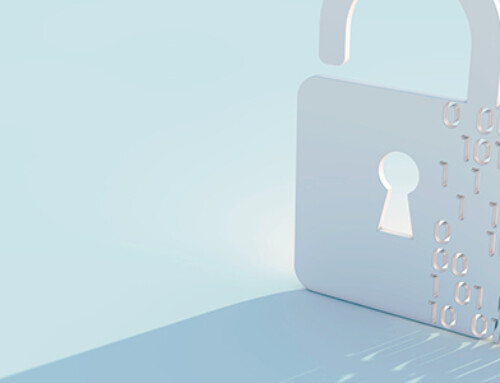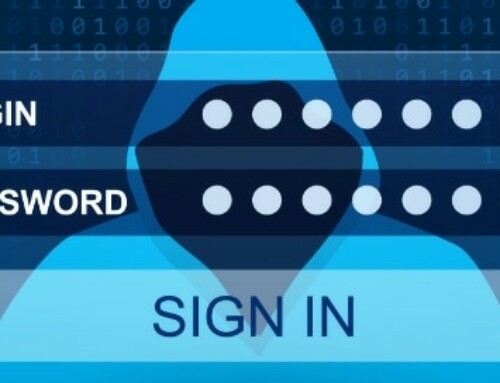Firewalls and antivirus software are often the first things business owners think of when it comes to IT security. While these are important components, they are merely the baselines for any strong IT security framework. As threats evolve and become more sophisticated, businesses need to stay ahead of the curve with more comprehensive security strategies.
What is the state of cybersecurity today?
Cybersecurity is an ever-changing landscape, and the risk of a data breach is higher than ever before. Security companies detect over half a million new malware strains every day, including ransomware that can completely shut down network operations. There are also cunning phishing schemes that can steal credentials and other sensitive information. Plus, the rise of AI-enhanced scams and adaptive malware has added new levels of sophistication to the cybercriminal’s arsenal.
If just one of these threats were to breach your system, the consequences could be disastrous for your organization. According to recent studies, the average cost of a data breach can reach $4.45 million per incident. That figure doesn’t even include the potentially fatal reputational damage and lawsuits stemming from data leaks. IT security should therefore be an absolute priority for all organizations, irrespective of their industry.
What steps should be taken to improve IT security?
To improve IT security, businesses need to adopt the following strategies:
Get vulnerability assessments
Vulnerability assessments involve identifying exploitable security gaps in your IT infrastructure, system configurations, devices, and applications. The assessments are typically performed by security specialists, who may simulate modern cybercriminal techniques to evaluate how well your IT security posture withstands the latest threats.
After the assessment, the security experts provide detailed reports stating the identified weaknesses and describe the steps needed to address them. This report is essentially a roadmap that will help you formulate a robust security plan and mitigate data breach risks.
Related reading: Ask yourself these 6 questions to gauge your company’s data security
Protect user accounts with stronger authentication
Time and again, users set generic passwords to simplify the process of remembering these. While this approach may provide a temporary convenience, it poses a grave risk to their cybersecurity. Simple passwords are easy to guess and leave users vulnerable to attacks. Moreover, when users recycle these passwords across multiple accounts, a security breach in one platform can lead to a domino effect, compromising other accounts as well.
To mitigate these risks, it is vital for users to develop good password habits. Every account should have a unique password (or passphrase) that contains at least 12 characters or more. Implementing systems that enforce strict password requirements is highly recommended. Additionally, you can add another layer of security with two-factor authentication, which requires users to enter a second form of identity verification after entering their password. The second factor could be a security code generated by a mobile authenticator app or a biometrics (e.g., fingerprint, facial ID) scan.
Use advanced tools to proactively monitor networks
Network security tools, such as next-generation firewalls and intrusion prevention systems, play a crucial role in identifying and preventing potential cyberattacks. These tools look for unusual behavior that may indicate malicious activity, such as anomalies in traffic volumes or unauthorized access attempts. They also limit your exposure to known threats by blocking malicious traffic from entering or leaving your network. Additionally, by leveraging advanced threat intelligence and machine learning algorithms, these security tools can help you detect and respond to the latest cyberthreats more quickly.
Update software regularly
Software updates are essential for the smooth operation of your devices and applications, and more importantly, they close down vulnerabilities that hackers can exploit. It’s therefore crucial to enable automatic updates or schedule periodic manual updates to ensure that you’re running the latest version of your software.
Leverage endpoint management software
With a diverse range of devices accessing business networks, including laptops, smartphones, and tablets, it’s becoming increasingly difficult to keep track of and secure all of them. Endpoint management software allows you to keep an eye on all company-registered devices from a central console. It lets you remotely distribute security patches and applications to all connected devices, ensuring that every system is armed with the latest defenses.
Endpoint management software also enables you to establish conditional access policies that prevent users from accessing sensitive data if their devices fail to meet certain security requirements. For instance, you can set rules for blocking outdated devices or those connected to unverified public networks. What’s more, if devices are lost or stolen, you can use the software to remotely locate, lock, and wipe the device, thus preventing any unauthorized access to company data.
Fully encrypt your data
Data encryption uses a combination of mathematical formulas and code to convert readable data into unreadable characters. Encryption software generates a unique encryption key that is used to translate the encrypted data back into its original form. The key is only accessible to authorized personnel, making it extremely difficult for malicious actors to gain access to the information. The most effective encryption protocols employ complex and lengthy keys such as 256-bit encryption, which exponentially increases the computational effort required to break the encryption through brute force.
There are two ways you should encrypt your data: in transit and at rest. Encrypting data in transit means protecting the communication between two systems as it travels over the network. Cryptographic protocols such as SSL and TLS establish secure and encrypted connections between a client (e.g., a web browser) and a server (e.g., a website), ensuring that data exchanged during online transactions, login sessions, or any other data transfers remain confidential and protected from eavesdropping or tampering.
Meanwhile, encrypting data at rest involves securing information while it is stored in databases, file systems, or other storage mediums. When data is encrypted at rest, even if someone gains physical or digital access to the storage medium, the data will remain unreadable without the decryption key.
Beware of insider threats
Most insider threats are unintentional, caused by employees who lack the awareness to recognize online scams and don’t thoroughly verify the source of emails or links before clicking. Some may even be completely clueless about the company’s data sharing policies and unwittingly share confidential information with unauthorized users. The only way to prevent these threats is with regular cybersecurity training. Employees must have an in-depth understanding of data management policies, password best practices, safe browsing habits, and how to identify the latest phishing scams.
Another type of insider threat is one where rogue employees intentionally sabotage the organization’s security to seek revenge or for financial gain. To defend against such malicious attacks, it is important to set strict internal controls and implement rigorous background checks for new hires. Ensure that all employees have signed confidentiality agreements and are aware of the repercussions should they breach these terms. Setting role-based access privileges will also help you limit the amount of data each employee can access. If your network monitoring tools find evidence of data misuse (e.g., large volumes of data being transferred to outsider devices), use access management tools to limit or lock down the account immediately.
Create an incident response plan
An incident response plan outlines a set of procedures and actions to be taken in the event of a security breach or cyber incident. It should include a clear chain of command, designating roles and responsibilities for key personnel during the response process. The plan should also establish communication protocols to ensure that all relevant stakeholders are promptly informed about the incident and its impact.
Moreover, the incident response plan should provide step-by-step guidelines on how to identify, contain, eradicate, and recover from the incident. This includes preserving evidence for forensic analysis, disconnecting affected systems from the network, and restoring lost data from cloud backups. Planning all this out will significantly minimize the damage and downtime caused by cyberattacks.
There’s a lot that goes into keeping a business safe from cyberattacks, so it’s always good to have an expert by your side. Dynamic Solutions Group, in particular, has a dedicated team of cybersecurity professionals who can help your organization identify and mitigate vulnerabilities before they become serious threats. We offer state-of-the-art security solutions and strategies tailored to your company’s specific needs, so contact us today for a free consultation.






